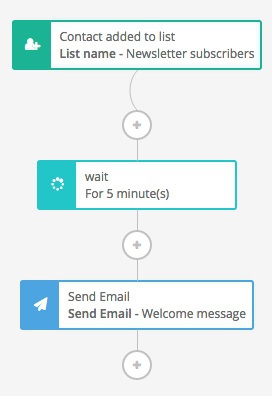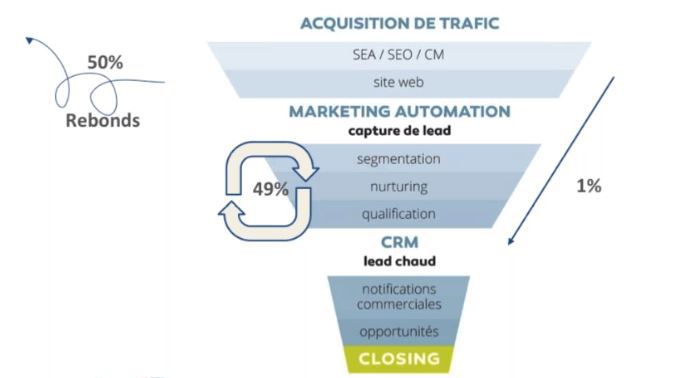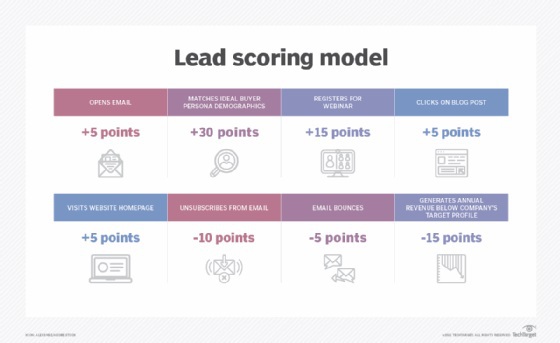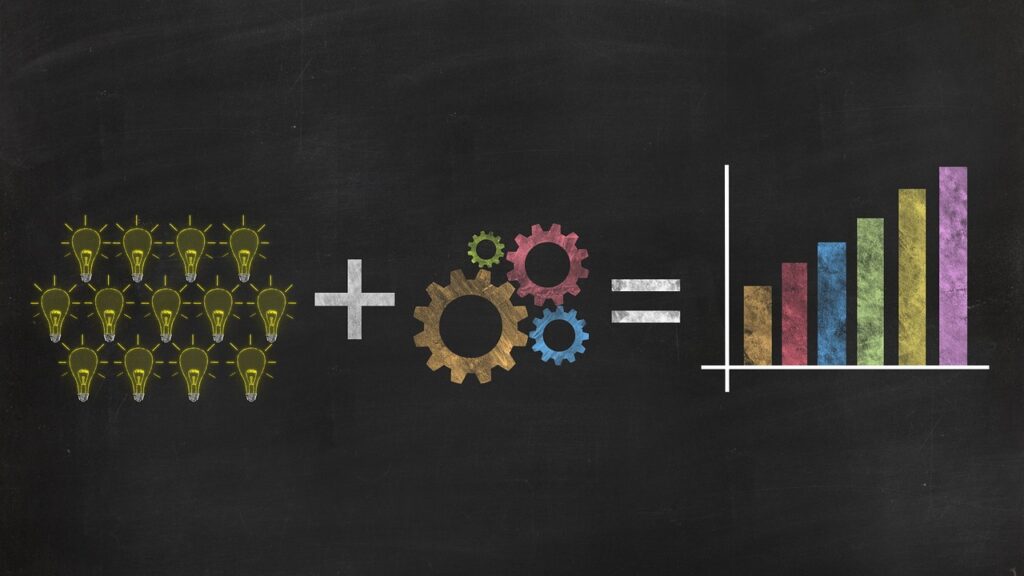Marketing involves countless tedious, repetitive tasks. Writing and sending out emails to prospects and customers, monitoring leads throughout their customer journey, segmenting contacts to refine targeting… As many small actions that, when put together, take up huge amounts of time and keep marketers from focusing on what truly matters: piloting their strategies and improving them over time. Getting back to basics. That’s the whole promise of marketing automation. And it’s been convincing and ever-growing number of companies to take the plunge. What is marketing automation, exactly? In this article, we’re going to discover its principles, explore what makes it tick, and understand all its benefits.

What Is Marketing Automation?
Marketing automation, in the broadest sense, allows you to create sets of automated marketing actions. Why should you want to do that? To help with the acquisition, monitoring, and conversion of new prospects, all the way to ensuring customer loyalty.
What is marketing automation going to achieve? Thanks to this solution, specific actions happen when a number of predefined conditions are met. For instance, a user who just finished filling out a form to gain access to a piece of content they wish to download, or to complete a purchase, will immediately receive a confirmation email. For larger companies that deal with an enormous contact database, this type of automation is essential – imagine having to manually write a welcome, thank you, or validation email for every purchase when need to handle tens of thousands of contacts!
In the case at hand, you could automate all sorts of actions. While marketing automation often refers to sending out emails or text messages, segmenting contacts, lead generation, and lead nurturing, and it can be applied to many other processes. For example, it can come into play in social media strategies – by programming social media posts instead of having to access your computer every time you need to post something. It is also useful for managing phone contacts within organizations that receive many phone calls – through a virtual call centre (connected to a voicebot or a callbot). The possibilities are infinite.
And it’s worth mentioning that digital marketing automation is nothing new. It’s even very well established. According to Moonsend, 49% of companies already rely on some form or automation for their marketing tasks.
How Does Marketing Automation Work?
Marketing automation uses scenarios – or workflows – suited to the needs of the processes or campaigns to be automated. Every scenario defines an entry point, meaning a prerequisite condition to be met for it to activate. This could be adding a new contact to the CRM, or a user adding a product to their basket.

Then, the scenario unfolds according to a linear path (an invariable string of actions that happen independently of how the user behaves) or a path with multiple branches. In that case, the system uses connectors (“if / then”) to determine which branches to follow. It means that if condition A is met, then an action B or C can take place. The same logic is applied until the scenario reaches its end.
As for the triggers – i.e. the conditions that start the actions – they can be linked to:
- The identity of the user (based on data collected about their location, date of birth, occupation, etc.).
- A given behaviour (an action performed at a given moment, or over a certain period).
To illustrate how marketing automation works, we can look at two examples based on the same initial condition: a user having filled out a form to receive a newsletter.
- In a linear scenario, the user receives a welcome email, and then, a few days later, their first newsletter.
- In a branched scenario, two different emails were prepared: one for individuals, and one for companies. For each category, there are two distinct newsletters: the first will be sent to contacts who are based in the U.K., whereas the other will go to foreign contacts. This means that the user’s identity will determine which message and which newsletter they will receive.
Another example of a branched scenario – sending a promotional offer based on the user’s order history. A trigger could be set up so that the user automatically receives an email containing a promotional code for their next purchase once they have bought X items or spent Y euros overall.
Only a specific tool can make all this possible. You need a digital marketing automation platform or marketing automation software connected to a CRM solution.
What Is Marketing Automation Used For?
In concrete terms, what does marketing automation allow you to do? Here are a few answers.
LEARN MORE ABOUT YOUR AUDIENCE
First, digital marketing automation is a way to nurture your relationship with your customers through the addition of contacts to a database. In essence, it’s a matter of collecting information about your users, and then feeding it to a dynamic list capable of segmenting the contacts automatically and to apply the right workflows at the right time.
To achieve this, you can rely on automation, which allows you to…
- Send out welcome and thank you messages whenever a user registers for a newsletter or a webinar, fills out a form to download a document, creates an account, etc.

(Source: Sendinblue)
- Deliver the content the user asked for when filling out a form.
By practicing “behavioural tracking”, you can improve your understanding of how your targets behave and refine their personas. In turn, this will allow you to craft ever more personalized messages.
IMPROVE YOUR CONVERSION RATE
Marketing automation contributes to the implementation of an optimized “conversion cycle”, from acquisition all the way to closing. It does so through three different processes:
- Audience segmentation within a CRM. This has to do with automatically directing each contact to the most relevant category for a better customer experience. For example, a real estate agency could have a “seller” category, a “buyer” category, and a “landlord” category.
- Lead nurturing, which consists in maintaining a constant contact with your leads throughout their progress down the conversion funnel and until they have performed the desired actions. To achieve this, it relies on automated messages, calibrated according to the user’s progress, that provide a strong added value to keep them interested and to improve their maturity.
- Progress monitoring is handled automatically through lead scoring. This allows you to rate your prospects based on the actions they perform. For example, opening an email could grant them 5 points, registering for a webinar 15 points, etc. (see image below). Once the leads reach a certain number of points, they are considered “hot” and can be put in touch with your sales representatives, who can then convert them.

(Source: definitions-marketing.com)

(Source: roseofnewyork.com)
And it works! Marketing automation increases leads for 80% of users and boosts conversion for 77% of them (Invespcro).
IMPROVE SALES AND REVENUE
As long as you implement relevant workflows, marketing automation contributes to significant improvements in terms of sales and revenue. How does it do that?

- By sending out reminders to users who started a given action but didn’t complete it. The best example is cart abandonment emails. A prospect adds items to their basket but leaves the site without completing their purchase. Minutes later, they will receive an email to remind them that their items are still waiting for them. The message could contain reassuring information, for example regarding shipping or returns. The idea is to provide solutions to any issues that might have caused the user to give up on their basket.
- By using upselling and cross-selling. From a customer’s purchase history, you can use marketing automation to provide relevant recommendations regarding additional products or services or encourage them to buy something else.
- By promoting engagement through automated messages asking your customers to write some feedback, share a document, create their own content where they enjoy the products or services they purchased, etc.
- By promoting customer loyalty through promotional offers, exclusive free content for “good customers”, referral programmes, event-based messages (to celebrate your customers’ birthdays, holidays, events), etc.
GAIN IN EFFICIENCY AND PRODUCTIVITY AND CUT COSTS
Marketing automation isn’t just used for optimizing specific processes. It can also improve the overall performance of your marketing strategy.
Above all else, implementing automated actions aims to save some time for your marketing teams. By no longer having to waste time performing repetitive tasks such as email marketing or posting content on social media, they can focus on piloting and perfecting their strategy. Thanks to automation marketing, marketers have more time to analyze their actions and monitor the performance of the marketing campaigns they launch. In turn, this allows them to have better arguments when managers ask them to “justify” their actions.
In that regard, note that 36% of marketers use automation to do away with repetitive tasks (Moonsend), which boosts their productivity by an average of 20% (nucleusresearch.com).
It also makes a difference in terms of savings. Thanks to the improvements it brings to every stage of the purchase cycle and to the time it frees up for your teams, marketing automation serves as an ROI accelerator. According to Marketo, 76% of marketers who have implemented such a process see an improvement in their ROI within a year. 44% experience it within six months. A simple chatbot could reduce customer support expenses by as much as 30% (source). All in all, automation has a positive influence on profitability and costs!
In conclusion, marketing automation is a powerful tool that improves marketing processes and optimizes strategies in the long run. The diversity in workflows makes automation possible for a large number of situations and the triggers can be extremely varied. It’s also a way to save precious time and to keep your marketing teams from having to perform repetitive tasks, which prevent them from focusing on what matters the most. And the good news is that automation is accessible to anyone, regardless of your field, strategy, or maturity. The only condition is to use the right tool!












